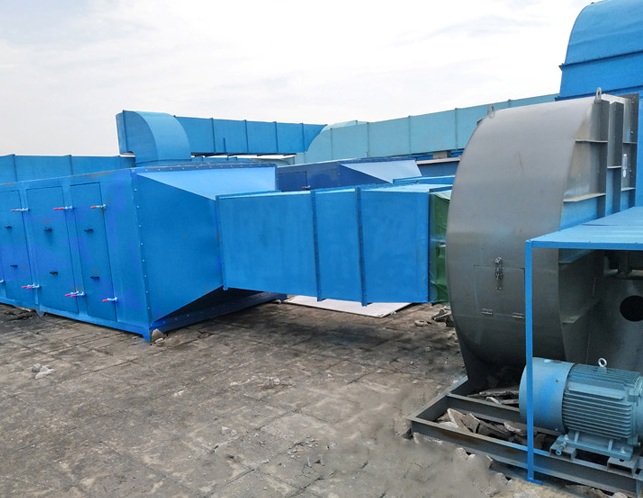
Product Name: paint waste gas treatment (water spray + photocatalysis + activated carbon adsorption)
Product Description: spraying waste gas purification equipment
Product information:
1. Process Flow Chart of Spraying Waste Gas Purification: Waste Gas Treatment Project of Spraying and Baking Paint (Water Spraying + Photocatalytic Deodorization + Activated Carbon Adsorption)
2. Explanations for the treatment process of spray paint waste gas treatment equipment (water spray dedusting tower + photocatalytic deodorization equipment + activated carbon adsorber):
The spraying process is caused by the exhaust gas of spraying paint. Under the action of atmospheric pressure, the liquid paint forms atomized dust particles and volatile triphenyl and other organic harmful substances. The concentration is high and the particle size is small. Most of them are below 10 micron. Without pretreatment, the micro-pores of the activated carbon will be blocked quickly and the activated carbon will be invalidated. After the paint spray exhaust gas is cleaned by the water curtain cabinet, it has a good cleaning and degrading effect on the paint mist. The exhaust gas enters the water spray waste gas treatment tower, after further cleaning by the wet swirl plate waste gas tower, it enters the photocatalytic deodorization equipment through the pressurized induced draft fan, and opens the chemical bond of volatile organic compounds under the irradiation of high energy ultraviolet ray. It can degrade into low molecular compounds such as CO2 and H2O by various reactions (photochemical reactions), and produce ozone by irradiating oxygen in the air with high-energy ultraviolet light. Ozone absorbs ultraviolet light to produce oxygen free radicals and oxygen. Oxygen free radicals interact with water vapor in the air to form hydroxyl radicals, a stronger oxidant. After being thoroughly oxidized to inorganic substances such as water and carbon dioxide with organic waste gases such as alcohols, aldehydes and carboxylic acids, the waste gases are absorbed by activated carbon adsorber, purified and finally discharged into the atmosphere through pipelines to meet the discharge standards. In order to achieve the best purification effect, after the waste gas is decomposed by photocatalytic deodorization equipment, the subsequent pipeline reaction time is 3-5 seconds.